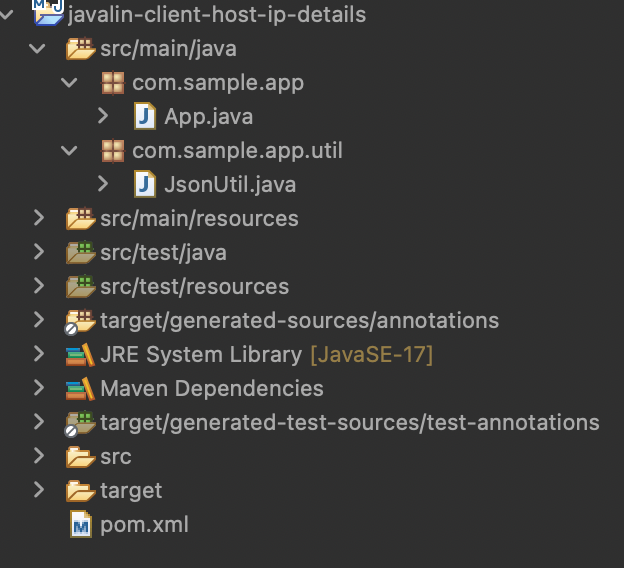Programming News
Dev
128

Image Credit: Dev
Compound Components: Advance React Patterns 👩🏻💻
- Advanced React patterns abstract common logic, improve scalability, and provide flexibility for building complex apps.
- Compound components allow related components to share state via a parent component without manual prop drilling.
- Benefits of compound components include improved API ergonomics, shared state management, composability, encapsulated logic, and flexibility for custom layouts.
- Compound components are ideal for creating wizards, forms with multiple sections, tab panels, charts, builders, etc.
- Real libraries like Radix UI, React Aria, and Headless UI utilize compound components for customizable and accessible UI primitives.
- Compound components offer more reusable, scalable, and customizable solutions compared to non-compound implementations.
- The Pizza Builder example demonstrates the use of compound components for selecting pizza size, toppings, and preview visually.
- Compound components ensure a flexible layout, decoupled concerns, and ease of extension for better code organization.
- By implementing compound components, developers gain insights into applying advanced React patterns for more efficient and maintainable code.
- The article encourages practical implementation and exploration of compound components to enhance understanding and application of advanced React patterns.
Read Full Article
7 Likes
Medium
311
Image Credit: Medium
Title: Command Center Genre: Drama Format: One-Act Play Length: ~4000 words
- Characters: Camille James, Eli Burns, Rina Cahill, Jordan Blake, Lena Dao.
- Setting: Sleek but unfinished space within a co-working building with startup energy and bureaucratic oversight.
- Scene 1: Camille reviewing live dashboard, wearing a headset. Eli enters holding a USB stick.
Read Full Article
18 Likes
Logrocket
68

Image Credit: Logrocket
Leader Spotlight: Engaging and retaining a growing fan base, with Dev Ward
- Dev Ward is the Head of Digital at the WNBA, leading digital transformation and growth initiatives, with previous experience at Disney Parks.
- Dev Ward discusses curating the digital experience for the WNBA fan base, utilizing data and social listening to measure engagement.
- Personalization in the fan experience is crucial, balancing engagement and revenue while ensuring a seamless, personalized app experience.
- Segmentation by behavior, location, and sentiment is used to tailor digital experiences for the diverse WNBA fan base.
- Dev Ward emphasizes aligning digital products with the WNBA's long-term goals and staying agile to adjust to changing business objectives.
- Strategic thinking drives core product offerings, like creating a configurable mobile app and focusing on user-friendly design.
- The redesign of the WNBA app involved prioritization, gathering fan feedback, and creating a central platform for all WNBA content.
- The biggest obstacle faced during the app redesign process was prioritization, balancing multiple fan needs and requests.
- Monitoring social engagement and storytelling are key for measuring brand affinity and enhancing fan loyalty in digital experiences.
- Collaboration with various teams, including data analytics and marketing, is essential to optimize digital experiences and drive fan engagement.
Read Full Article
4 Likes
Self-Learning-Java
407

From Good to Great: Enhancing LLM Responses with Self-Refinement
- Large Language Models (LLMs) in generative AI offer possibilities for automation, content generation, and problem-solving.
- Self-refinement enhances LLM responses by iteratively evaluating and improving their output for accuracy and depth.
- The technique involves posing a prompt, getting an initial response, providing critique, and refining the response.
- Self-refinement helps in generating better quality solutions, as demonstrated with a Java prime number program example.
- Feedback loops enable addressing issues and improving responses over multiple iterations.
- Refinement techniques like using try-with-resources or a finally block ensure proper handling of resources like Scanner objects.
- Moving code logic into utility classes can streamline the code structure and enhance code reusability.
- Benefits of self-refinement include improved accuracy, deeper exploration of answers, and simulating a collaborative refinement process.
Read Full Article
24 Likes
Discover more
- Software News
- Web Design
- Devops News
- Open Source News
- Databases
- Cloud News
- Product Management News
- Operating Systems News
- Agile Methodology News
- Computer Engineering
- Startup News
- Cryptocurrency News
- Technology News
- Blockchain News
- Data Science News
- AR News
- Apple News
- Cyber Security News
- Leadership News
- Gaming News
- Automobiles News
Self-Learning-Java
448

Generated Knowledge prompting in LLMs
- Generated Knowledge Prompting involves providing additional data or context to the LLM along with the query to enhance the quality of responses.
- By feeding structured information related to the domain, such as a database schema for SQL queries, the LLM can generate more accurate and relevant results.
- Providing schema details guides the model in constructing correct SQL syntax, converting natural language queries into actionable SQL statements.
- Generated Knowledge Prompting is beneficial for tools enabling non-technical users to query databases, automating database interactions in chatbots, and reducing the learning curve for SQL.
Read Full Article
26 Likes
Self-Learning-Java
187

Chain-of-Thought Prompting Technique in LLMs
- Chain-of-Thought prompting is a technique used to guide Large Language Models (LLMs) by breaking problems into smaller logical steps to improve accuracy and logical reasoning.
- This technique involves providing step-by-step instructions to the LLMs, encouraging them to think through a problem sequentially like a human.
- Advantages of Chain-of-Thought Prompting include improved accuracy, scalable problem-solving, enhanced debugging, and better generalization to unseen problems.
- Best practices for Chain-of-Thought Prompting include using analogous examples, being explicit in outlining steps, iterating and refining prompts, and leveraging few-shot learning for complex tasks.
Read Full Article
11 Likes
Self-Learning-Java
116

Image Credit: Self-Learning-Java
Javalin: get the client host and ip address
- Javalin provides methods to retrieve client host name and IP address.
- ctx.host() returns the client host name while ctx.ip() returns the client IP address.
- To utilize these methods, a Maven project 'javalin-client-host-ip-details' was created.
- An application was developed that demonstrates how to fetch and display client host and IP details using Javalin.
Read Full Article
6 Likes
Medium
205

Image Credit: Medium
GitHub Profile and Repository Optimization Tips for Developers in 2025
- Choose a consistent and professional username to make it easy for recruiters and collaborators to find you.
- Write a concise, keyword-rich bio that highlights your main programming languages, current role, interests, and what you're learning.
- Pin top repositories that showcase your best work and create detailed README files for each project.
- Commit regularly, use descriptive tags, organize repositories, contribute to open-source projects, and share technical content externally to enhance your GitHub profile.
Read Full Article
12 Likes
Dev
260

Image Credit: Dev
Type-Safe Theming in Tailwind CSS Using CSS Variables and TypeScript
- Tailwind CSS v3.4+ introduces @theme and @custom-variant for dynamic theming.
- Developers can now create type-safe theming using CSS variables, TypeScript, and no JS logic.
- The traditional tailwind.config.js for defining colors has limitations like no runtime access.
- A centralized theme with typed theme.ts file and CSS variable generation provides a clean solution.
- Runtime theming, dynamic color changes, and support for light/dark modes are made easy with this approach.
- A build script with esbuild extracts theme object and generates a tailwind.css file for native Tailwind CSS support.
- Usage involving CSS variables for Tailwind properties simplifies theming implementation.
- The setup allows for easy integration of dark, daylight, retro modes and supports theme toggling.
- Centralized theme definition ensures type safety, minimal duplication, and runtime theme switching without JS updates.
- This approach offers scalability to multiple theme modes effortlessly, making it modern and type-safe.
Read Full Article
15 Likes
Dev
416

Image Credit: Dev
Why React is Better for Multi-Page Websites?
- React, with its component-based architecture and powerful routing capabilities, is a better choice for building multi-page websites than traditional HTML approach.
- Traditional HTML approach involves separate HTML files for each page, leading to repetitive code, harder maintenance, full page reloads, and poor state management.
- React offers advantages like component reusability, React Router for seamless navigation, Single Page Application (SPA) experience, easier maintenance, and streamlined state management.
- Popular multi-page applications like Dev.to, Hashnode, and Netlify Dashboard are built with React, showcasing its efficiency and performance benefits for multi-page websites.
Read Full Article
25 Likes
Dev
224

Image Credit: Dev
How to Fix Clerk AuthMiddleware Errors in TypeScript?
- One common error developers face when working with authentication in Next.js and Clerk is the 'Clerk: auth() was called but it looks like you aren't using authMiddleware in your middleware file' message.
- The error occurs when the middleware system in Next.js is not correctly configured to route requests through the authMiddleware, causing authentication failures or unhandled routes.
- To resolve this error, developers need to verify and update their middleware setup, ensure correct matcher configuration, check API route implementations, test the setup, and handle deployment properly.
- Attention to detail in configuring authMiddleware and API routes is crucial for successful authentication setup using Clerk in Next.js TypeScript applications.
Read Full Article
13 Likes
Dev
192

Image Credit: Dev
Routing in Spin Apps with Hono
- The Spin SDK for JavaScript and TypeScript has improved its developer experience by aligning with popular patterns and tools.
- The HTTP router capabilities were moved from the Spin SDK for JS, allowing users to choose their preferred router like Hono.
- Hono Router is a lightweight system for handling HTTP requests efficiently with an intuitive API and middleware support.
- Updating Spin templates is recommended before starting a project using tools like spin new -t http-ts routing-with-hono.
- Instructions are provided on how to create a Spin app with TypeScript and Hono Router, including defining routes and middleware.
- Testing the default implementation involves compiling code to WebAssembly and running the application locally.
- Building a Restful HTTP API with Hono includes implementing handlers for various routes and error handling.
- Permission to use external resources like key-value store is granted by updating the component configuration in spin.toml.
- Running and testing the Spin app involves compiling the code and using curl to interact with different endpoints.
- Leveraging Hono's routing capabilities with Spin helps in creating efficient, secure, and scalable APIs.
Read Full Article
11 Likes
Medium
183

Image Credit: Medium
8 Must-Have Coding Tools That Feel Like Superpowers
- The author faced productivity challenges related to excessive noise on the screen and overflowing tabs while coding, leading to a lack of creativity.
- In search of tools to enhance development efficiency, the author focused on finding practical and well-built tools that simplify coding processes.
- An example of such a tool is Scrapeless, which the author used to pull data from multiple job boards for a side project, avoiding the need to write scraping scripts.
- The author emphasizes the importance of using tools that streamline coding tasks and reduce friction in order to maintain a productive workflow.
Read Full Article
11 Likes
Medium
434

Clean Code, Clean Finances — Software Principles in Personal Finance
- Implementing S.O.L.I.D principles in personal finance can lead to a structured and effective approach to managing finances.
- Applying Single Responsibility Principle to budgeting involves assigning specific responsibilities to different accounts like Necessities, Goals, and Fun expenses.
- Adhering to Open/Closed Principle in finances means creating a scalable financial plan that can adapt to changes like income growth without requiring frequent revisions.
- Leveraging Liskov Substitution Principle entails creating diverse sources of income to ensure financial stability even if one source diminishes.
- Following Interface Segregation Principle advises using only financial tools that are well understood and tailored to individual needs and knowledge.
- Employing Dependency Inversion Principle suggests building income streams independent of a single job function through investments and passive returns.
- Lastly, embracing the KISS principle (Keep It Simple, Stupid) in investments recommends focusing on stable and understandable business ideas rather than risky and complex ventures.
Read Full Article
26 Likes
Medium
79

Image Credit: Medium
How to Build Open Source Products That Earn $450K/Month in 2025
- Builders are creating AI-native tools on open source tech stacks to earn between $50K to $450K monthly.
- To replicate their success, focus on finding real pain points in workflows that are overcomplicated, poorly automated, or patched together with various tools.
- Engage with developers, ops teams, freelancers, or small business owners to identify areas where significant time is being spent weekly.
- Once a problem is identified, leverage open source technologies for 90% of the stack instead of building from scratch to create a successful product.
Read Full Article
4 Likes
For uninterrupted reading, download the app